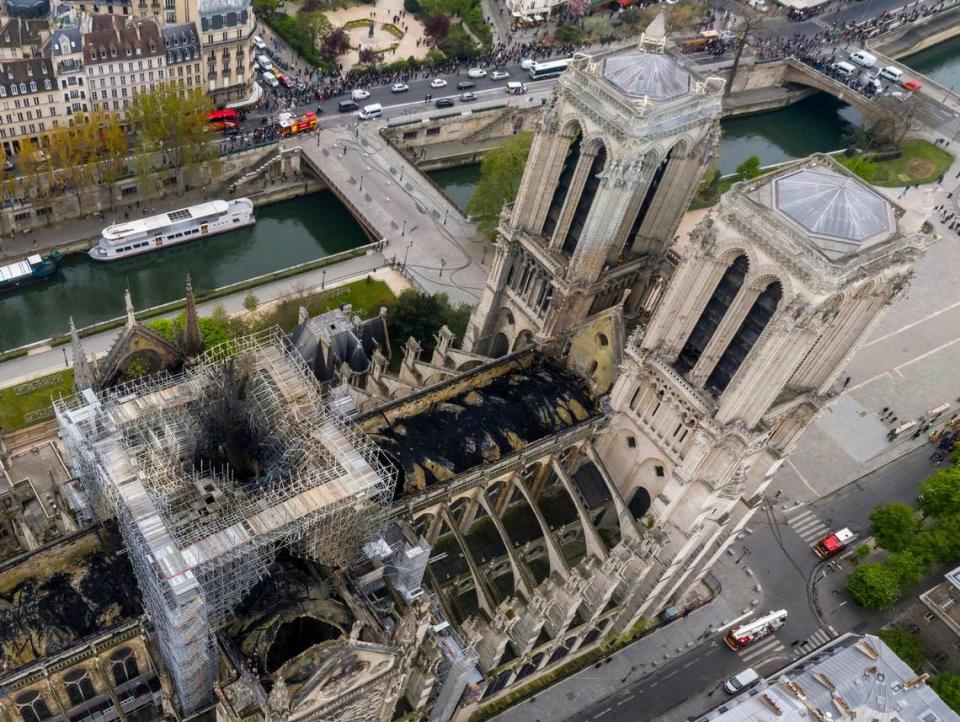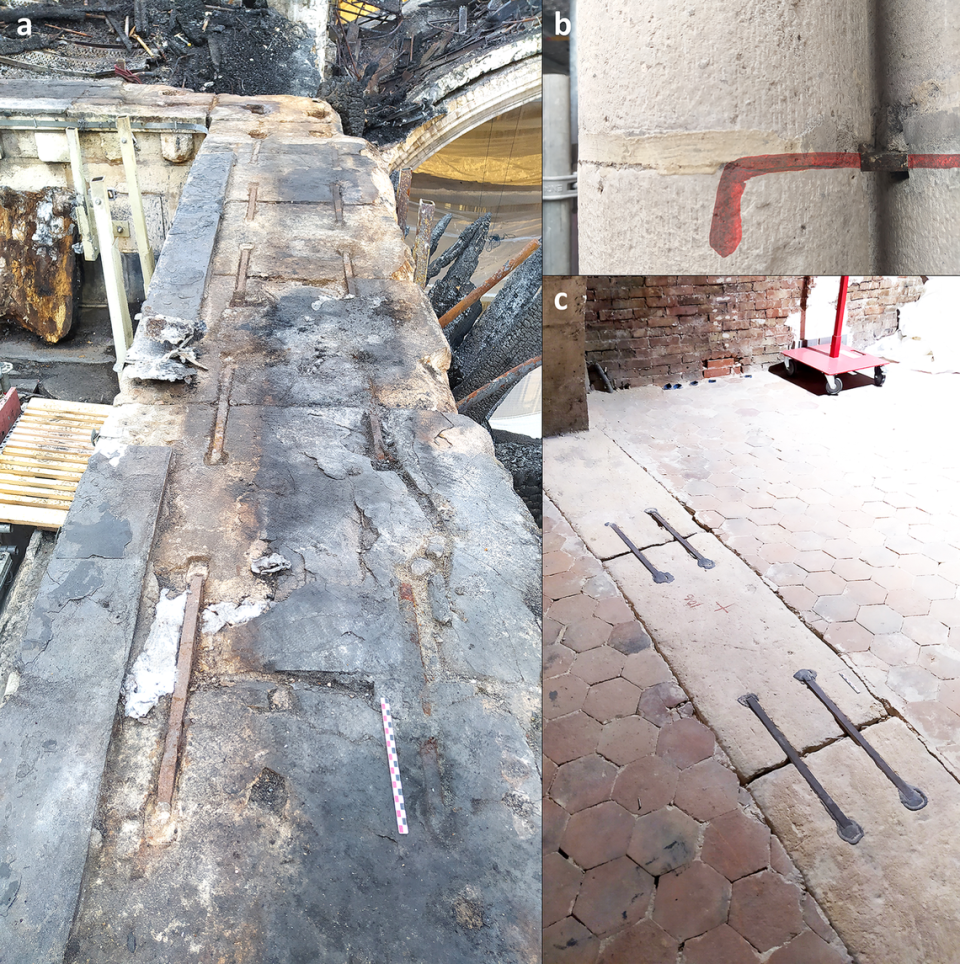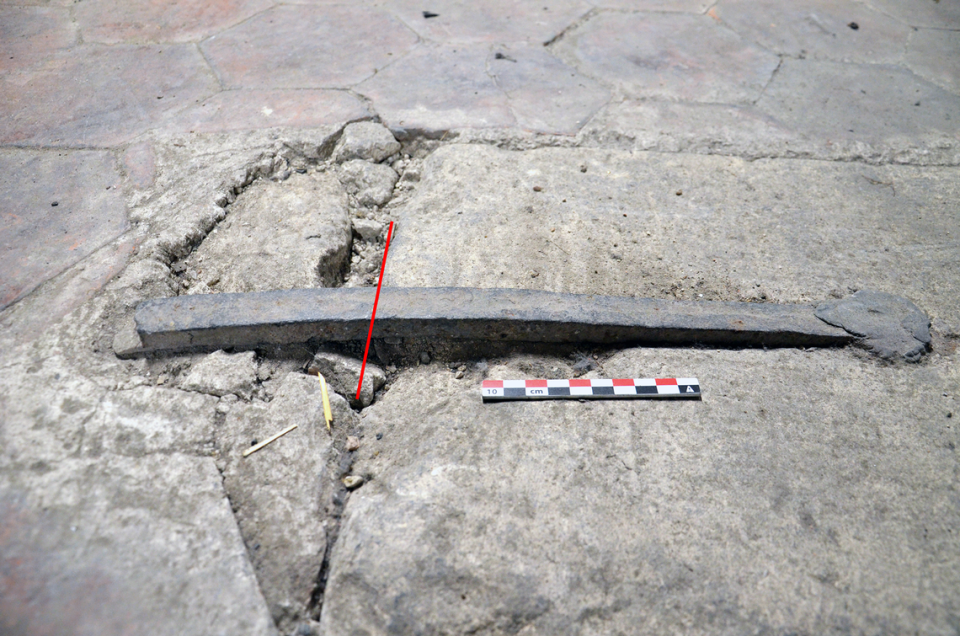The ‘first iron lady’? Fire at Notre Dame revealed architectural secrets, study shows
- Oops!Something went wrong.Please try again later.
In 2019, the world stood in shock as flames engulfed the famous Notre-Dame de Paris cathedral.
More than 800 years of history felt like it was being lost as the fire spread and the walls crumbled.
But from the fire rose a phoenix of archaeological, historical and architectural discovery.
In a new study, historians and architects have identified an internal iron skeleton of the cathedral, something they believe is the first of its kind.

The researchers found the stones that had been used to build the 12th-century Gothic-style cathedral were held together by what could be considered iron staples. This technique had never been recorded in a building from this time period, according to the March 15 study published in PLOS One.
The staples were placed from one stone to another to better enhance their strength and connection, according to the study.

Notre-Dame de Paris took 300 years to construct, starting in the early 12th century, according to the cathedral website. The cathedral was built in multiple parts during that time and was the backdrop for significant historical events in France.
Historians knew some of the iron structures were used in the cathedral, but it wasn’t until the fire demolished portions of the building that they could get a closer look at when the staples may have been used, according to the study.
“This is the first building of its kind in which we see this,” lead author Maxime L’Héritier told LiveScience. “This shows [that the builders] at the time were trying to experiment with new forms of construction.”
The staples provided an extra support of the masonry that was used to build the enormous place of worship, including the two towers that reached heights of 226 feet, according to the study. The researchers said that without the added support of the iron, reaching that height would have been impossible in 1160 when construction first began.
The researchers used radiocarbon dating, a technique that uses the time of decay of carbon-14, to see that the age of the iron staples matched the age of the stones used, so the researchers knew they had been placed at the same time.

Because of the age of the iron and their extensive use, the researchers dubbed the cathedral the “first iron lady.”
The researchers now know the age and use of the iron structures, but there are still some questions to be answered.
“Beyond the obvious need to use such iron implements given the medieval builders’ conception of their architecture,” the study read. “What role did these staples play (and do they still play today) in the cathedral’s equilibrium?”
After years of construction and restoration, the Notre-Dame de Paris is set to reopen in December 2024, according to the Associated Press.
Pink, fuzzy and lurking deep in the ocean — new lobster species is one of 5 just found
Thief steals box full of letters to lost loved ones — then returns it, funeral home says
Artist’s tiny home built inside a dumpster is ‘actually amazing’, TikTok video shows
Calf is named Happy because of the heartwarming pattern in his fur. See for yourself

